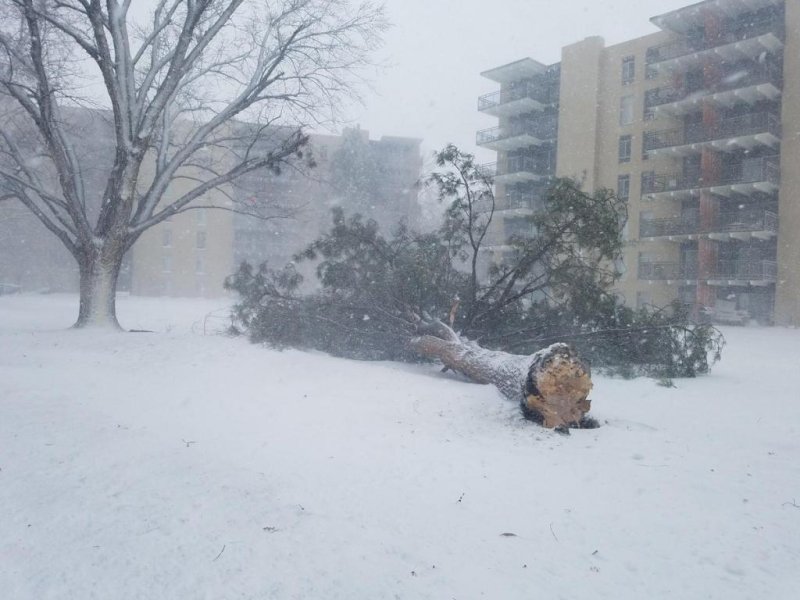A so-called "bomb cyclone" brought deadly blizzard conditions to Colorado on Wednesday as it moved toward the Great Plains and parts of the Midwest. Photo courtesy Denver Fire Dept./
Twitter
March 13 (UPI) -- A powerful winter storm equivalent to the strength of a Category 1 hurricane blustered through Colorado toward the Great Plains and parts of the Midwest on Wednesday, resulting in at least one death.
The so-called "bomb cyclone" brought blizzard conditions to Colorado, Nebraska, and Wyoming, leaving thousands without power and causing road closures and other traffic difficulties.
Colorado was hit hardest by the storm on Wednesday, with forecasters predicting between 6 and 10 inches of snow to fall in the Denver metro area throughout the day and up to 20 inches of snow expected for mountainous regions, along with a possible foot of snow on the Eastern Plains.
Snow in the state was forecast to last through Thursday morning.
Colorado State Patrol is considering the poor driving conditions as a possible factor in a traffic incident that killed a member of the force.
Cpl. Daniel Grove, 52, was struck and killed by a vehicle while responding to a scene where another vehicle slid off of a roadway.
Grove was transported to a local hospital and was declared dead shortly afterward.
The Boulder National Weather Service announced on Twitter that avalanche warnings were in effect for the Colorado mountains and urged people to avoid travel.
"Heart of this blizzard is spreading east across the northeast plains of Colorado. Many roads are now closed. If you absolutely must travel, take a winter survival kit. If you become stranded, stay in your vehicle (it's your only protection) and wait for help to arrive," the agency said.
The NWS also said the core of the strongest winds would be shifting east over the eastern Colorado plains in the afternoon, with wind gusts up to 92 mph in Glen Haven.
Nearly 140,000 people in Colorado were without power on Wednesday due to the storm, according to Poweroutage.us. and electrical provider Xcel Energy said it had an additional 200 employees and contractors working to respond to outages
The storm is an example of a bombogenesis, commonly known as a bomb cyclone, which occurs when a low-pressure system's minimum central pressure drops at least 24 millibars over the course of 24 hours, according to Forbes.
It developed as a result of a deep trough moving over the Rockies through two areas of stronger wind within the jet stream and and had a minimum central pressure of 970 millibars.
Meanwhile, a storm moved through Texas, producing wind gusts of up to 109 mph in Grand Prairie, 78 mph at Dallas Fort-Worth International Airport, 71 mph in Addison and 58 mph in McKinney, according to the NWS.
Meteorologist Monique Sellers told The Dallas Morning News that the gusts recorded at the airport were the highest measured by the weather service's observing system since 1995.
About 67 planes and 13 buildings were damaged at the Grand Prairie Municipal Airport as a result of the storm, city spokeswoman Cami McKillop said.
The state also experienced 68,531 power outages, according to Poweroutage.us.
Much of North Texas was placed under a wind advisory until 7 p.m. Wednesday due to winds of 25 mph to 35 mph and gusts of up to 45 mph expected throughout the day.















